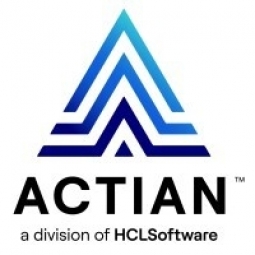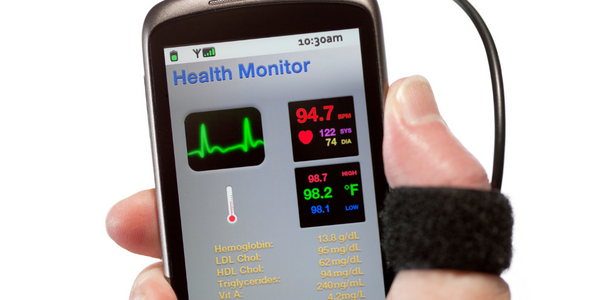Customer Company Size
Large Corporate
Region
- America
Country
- United States
Product
- Actian DataConnect
Tech Stack
- Data Integration
Implementation Scale
- Enterprise-wide Deployment
Impact Metrics
- Productivity Improvements
- Cost Savings
Technology Category
- Platform as a Service (PaaS) - Data Management Platforms
Applicable Industries
- Healthcare & Hospitals
Applicable Functions
- Business Operation
Use Cases
- Regulatory Compliance Monitoring
- Automated Disease Diagnosis
Services
- Data Science Services
About The Customer
Pediatrix Medical Group was founded in 1979 and has grown to become America’s leading provider of maternal-fetal, newborn, and pediatric sub-specialty physician services. The company is supported by clinicians and business professionals in a collaborative effort to provide the best patient services, backed by ongoing research, education, and quality improvement initiatives. This requires a flexible and scalable healthcare IT environment in which large volumes of disparate data can be managed with speed and efficiently. In the early 2000s, Pediatrix foresaw the need for heightened technology to manage the complexity and scale of big data in the rapidly changing healthcare environment and teamed up with Actian, adopting Actian DataConnect™ to address this challenge.
The Challenge
Pediatrix Medical Group, a leading provider of maternal-fetal, newborn, and pediatric sub-specialty physician services, was facing significant challenges in its claims processing due to lack of data integration. The company works with multiple clearinghouses for insurance claims and receiving claims status reports, each of which employs unique and complex formats in generating reports. The lack of data integration between internal applications and clearinghouses caused breaks in information flow, slowing down the claims review and reporting process, and creating a disconnect between reporting and other process steps in the Pediatrix patient life cycle. As the volume of the claims increased, these challenges grew more severe, causing bottlenecks and delays in insurance claims processing.
The Solution
Pediatrix adopted Actian DataConnect to automate its end-to-end claims processing. Actian DataConnect allowed Pediatrix to integrate, migrate, sync, validate, standardize, and enrich all of its claims data on a single platform. This improved claims reviews and reporting while integrating this step with other business-critical processes. Actian DataConnect established an event-driven, message-based infrastructure on which the company can connect to any data with greater visibility and control of the data integration environment. It transforms all the data and presents it as a single database table, reducing the time, resources, and risk of error involved in reporting, especially when medical claims are rejected and reports indicate that they must be resubmitted.
Operational Impact
Quantitative Benefit

Case Study missing?
Start adding your own!
Register with your work email and create a new case study profile for your business.
Related Case Studies.

Case Study
Hospital Inventory Management
The hospital supply chain team is responsible for ensuring that the right medical supplies are readily available to clinicians when and where needed, and to do so in the most efficient manner possible. However, many of the systems and processes in use at the cancer center for supply chain management were not best suited to support these goals. Barcoding technology, a commonly used method for inventory management of medical supplies, is labor intensive, time consuming, does not provide real-time visibility into inventory levels and can be prone to error. Consequently, the lack of accurate and real-time visibility into inventory levels across multiple supply rooms in multiple hospital facilities creates additional inefficiency in the system causing over-ordering, hoarding, and wasted supplies. Other sources of waste and cost were also identified as candidates for improvement. Existing systems and processes did not provide adequate security for high-cost inventory within the hospital, which was another driver of cost. A lack of visibility into expiration dates for supplies resulted in supplies being wasted due to past expiry dates. Storage of supplies was also a key consideration given the location of the cancer center’s facilities in a dense urban setting, where space is always at a premium. In order to address the challenges outlined above, the hospital sought a solution that would provide real-time inventory information with high levels of accuracy, reduce the level of manual effort required and enable data driven decision making to ensure that the right supplies were readily available to clinicians in the right location at the right time.

Case Study
Gas Pipeline Monitoring System for Hospitals
This system integrator focuses on providing centralized gas pipeline monitoring systems for hospitals. The service they provide makes it possible for hospitals to reduce both maintenance and labor costs. Since hospitals may not have an existing network suitable for this type of system, GPRS communication provides an easy and ready-to-use solution for remote, distributed monitoring systems System Requirements - GPRS communication - Seamless connection with SCADA software - Simple, front-end control capability - Expandable I/O channels - Combine AI, DI, and DO channels

Case Study
Driving Digital Transformations for Vitro Diagnostic Medical Devices
Diagnostic devices play a vital role in helping to improve healthcare delivery. In fact, an estimated 60 percent of the world’s medical decisions are made with support from in vitrodiagnostics (IVD) solutions, such as those provided by Roche Diagnostics, an industry leader. As the demand for medical diagnostic services grows rapidly in hospitals and clinics across China, so does the market for IVD solutions. In addition, the typically high cost of these diagnostic devices means that comprehensive post-sales services are needed. Wanteed to improve three portions of thr IVD:1. Remotely monitor and manage IVD devices as fixed assets.2. Optimizing device availability with predictive maintenance.3. Recommending the best IVD solution for a customer’s needs.

Case Study
HaemoCloud Global Blood Management System
1) Deliver a connected digital product system to protect and increase the differentiated value of Haemonetics blood and plasma solutions. 2) Improve patient outcomes by increasing the efficiency of blood supply flows. 3) Navigate and satisfy a complex web of global regulatory compliance requirements. 4) Reduce costly and labor-intensive maintenance procedures.

Case Study
Cloud-based healthcare solution for Royal Philips
Royal Philips wanted to launch its cloud-based healthcare solution HealthSuite Digital Platform in China to deliver services to help cope with challenges related to urbanization and population growth. Philips wanted to achieve this goal by combining mobile, cloud computing and big data technologies. To bring this platform and product to market, Philips required cloud computing and local technical service capabilities in China, in addition to a flexible IT infrastructure that could handle user requests.








